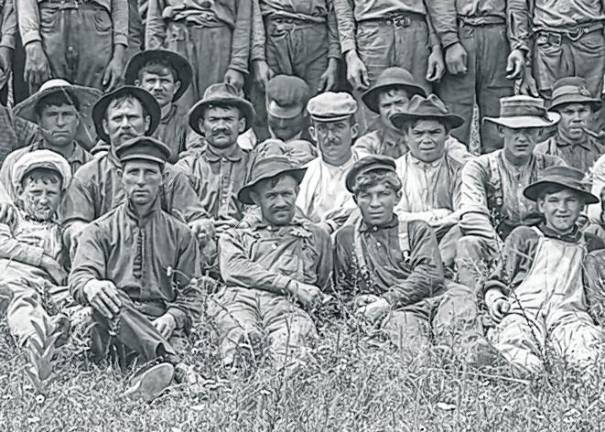
St. Patrick’s Day is Sunday, March 17. It is what is known as a feast day in the Catholic church.
The day has taken on additional significance during the years and has become almost a holiday for the pedestrian public: a day to visit one’s local pub or tip a pint with friends.
Parades date back to 1737. The oldest and largest parade in the world is in New York City. There also are big celebrations in other U.S. cities, such as Chicago, Boston and Savannah, Ga.
Celebration of St. Patrick’s Day is rather ubiquitous and has spread to many more than just Irish people. But this may bring thought of the Irish in America. And, for our historically related purpose, in Sussex County in particular.
Some Irish were in America before the Revolutionary War because of turmoil in Ireland and the Cromwellian conquest. These were mainly Catholics.
Many came to America as indentured servants. This means that they owed their benefactor their labor after arriving in this country for about five years on average. This servitude was the result of the expensive voyage across the Atlantic Ocean and the poverty of those wanting to come. Being an indentured servant was a choice for many.
During the 1700s, emigration from Ireland shifted from those attesting to be Catholic to those who were Protestant. This was mainly up to the 1830s. The precursor to this was the displacement or movement of mostly Scots from the Lowlands of Scotland to the northern sections of Ireland, and these people were mainly Presbyterians.
These immigrants to America came mostly as families who had bad harvests or unsustainable rents to landlords or came to avoid violence. Many settled in Appalachia.
Some came through Philadelphia and up toward our county, such as my Ramage ancestors. This group of immigrants are referred to as Scots-Irish.
During the mid- to late 1800s, there was sentiment against Irish and Catholics. They had remained mostly in their own groups before a better integration into the whole of society. The Catholic church in Franklin Furnace wasn’t built until the 1870s.
From 1820 to 1860, a large contingent of Irish emigrated because of the Great Irish Famine. Many died while crossing the Atlantic because of unhealthy conditions on what were called “coffin ships.” During the many years, this great influx of Irish made a large impact on our land, especially along the Northeast Coast.
It is this immigration group - those escaping the Great Irish Famine -who seem to have had the most impact on Sussex County. During the mid-1800s, laborers were needed for many of the projects that were part of the American expansion. Notable jobs were building the canals, in mining, construction of railroads and bridges, and working in the many mills.
The strenuous work of mining brought Irish to the iron mining places, which were plentiful in the Sussex County area. Some may have undertaken tree cutting for charcoal, which was a dirty job necessary for the water-powered smelting of the iron ore.
Perhaps the largest influx of Irish had to do with the building of the railroads in the 1860s and after in our area - work also done in significant numbers by Italians. Among the benefits of the railroads were they brought coal from Pennsylvania for use in the home for heat and cooking and for industrial use to generate power.
Today, about 15 percent of New Jersey citizens are listed as of Irish descent. The tough jobs that they had did first have been made easier through machinery, and much of that work has passed on to other groups who are diligently trying to provide a living for their families and to make a place for themselves in America.
The hard work done more than 100 years ago by the Irish has helped them blend in with society as a whole. And to how the Irish have helped strengthen America, I thus tip a pint!
Contact Bill Truran, Sussex County’s historian, at billt1425@gmail.com